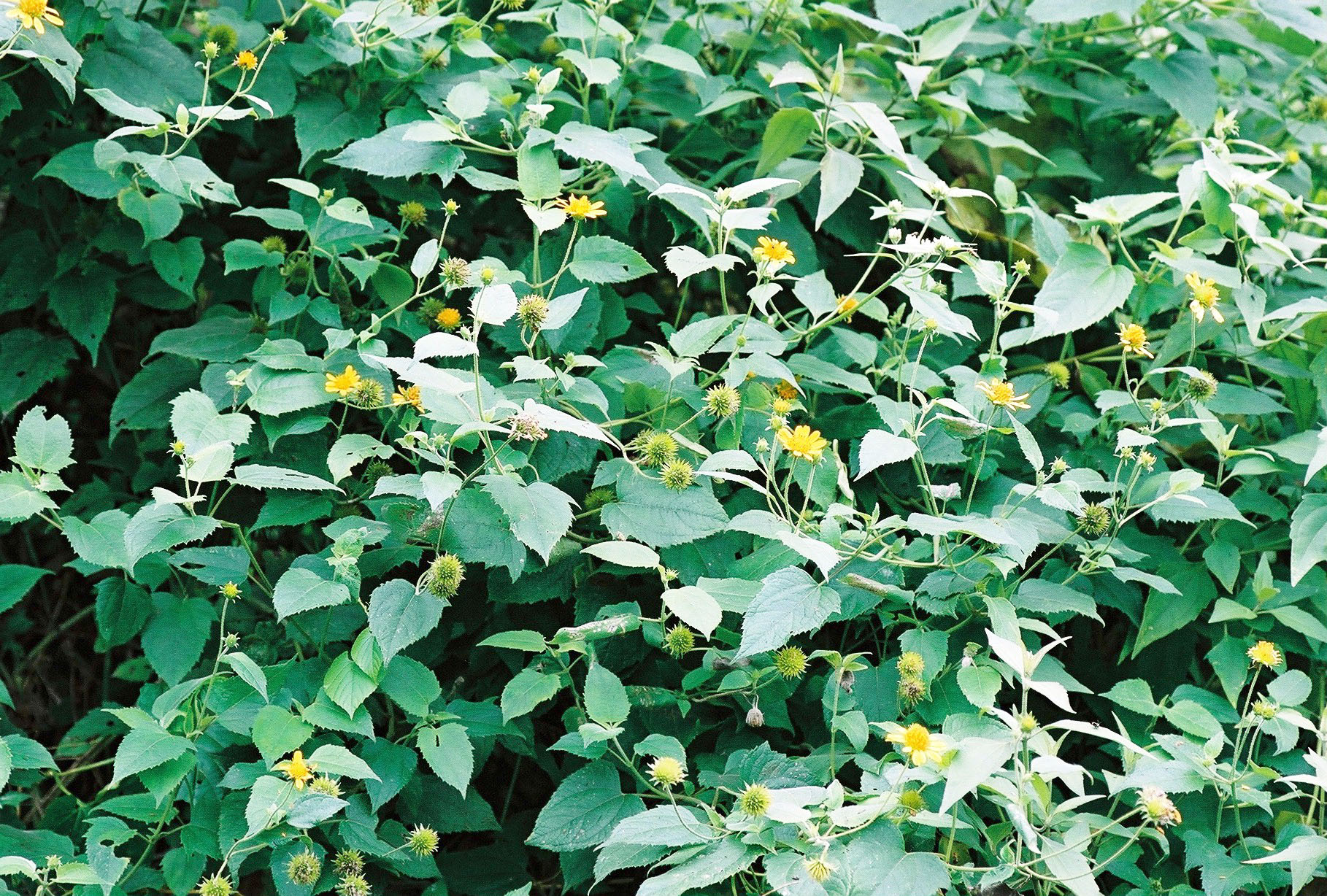Melanthera scadens

|
|
Melanthera scandens Common Names: Melanthera, Climbing False Daisy, Yellow
Weed Scientific
Classification Kingdom: Plantae Phylum: Angiosperms Class: Eudicots Order: Asterales Family: Asteraceae Genus: Melanthera Species: M. scandens Synonyms: Amellus scandens (Schumach. & Thonn.) Kuntze, Buphthalmum scandens Schumach. & Thonn., Melanthera brownei (DC.) Sch.Bip., Wollastonia scandens (Schumach. & Thonn.) DC. Morphological Description Melanthera scandens is a sprawling or climbing herbaceous perennial in the
Asteraceae family, often reaching 1–3 m in length. Its key features include: · Habit: Trailing or climbing vine with slender, branching stems,
often rooting at nodes. · Stem: Green to reddish-brown, scabrous (rough-textured), covered
with short, stiff hairs. · Leaves: Simple, opposite, ovate to lanceolate, 5–12 cm long, 3–7 cm
wide, with serrated or toothed margins, dark green, and sandpaper-like texture
(Burkill, 1985). · Flowers: Small, yellow, in terminal or axillary heads (capitula), 1–2
cm across, with 5–10 ray florets and numerous disc florets. · Fruit: Achenes, 2–3 mm long, dark brown, with a pappus of short
bristles aiding wind dispersal (Dalziel, 1937). Its rough foliage and
bright yellow flower heads are characteristic of the genus (Keay, 1989). Distribution and Habitat Melanthera scandens is native to tropical Africa and has spread pantropically
due to human activity: · Regions: West Africa (Nigeria, Ghana, Senegal), Central Africa
(Cameroon, DR Congo), East Africa (Kenya, Tanzania), and introduced in Asia
(India, Philippines) and the Americas (Brazil). It thrives in disturbed
habitats such as roadsides, fallow fields, forest edges, and riverbanks at
elevations up to 1,200 m, preferring sandy or loamy soils (pH 5.0–7.0) and full
sun (Burkill, 1985). Ethnopharmacology Melanthera scandens is a medicinal plant known for its anti-inflammatory,
antimicrobial, antioxidant, analgesic, and antidiabetic properties.
Traditionally used to treat wounds, infections, fever, stomach disorders, and
liver ailments, it is applied as a decoction, poultice, or extract. The plant
contains bioactive compounds like flavonoids, alkaloids, and tannins, which
contribute to its healing effects. It also shows potential in managing
diabetes, malaria, and oxidative stress. While beneficial, its use should be
guided by caution, especially in pregnant women or at high doses due to
potential toxicity. · Wound Healing: Leaf poultices in Ghana accelerate wound closure.
Freiesleben et al. (2017) found warm water leaf extracts (50 μg/mL) enhanced
fibroblast proliferation by 35% and migration by 40% in vitro, linked to
flavonoids. · Antimicrobial: Leaf decoctions in Nigeria treat infections. Tagousop et al.
(2018) reported saponin-rich extracts (MIC 32 μg/mL) inhibited Escherichia coli, Staphylococcus aureus, and Candida albicans. · Anti-inflammatory: Leaf infusions in Senegal reduce swelling.
Okoli et al. (2007) showed ethanolic extract (200 mg/kg) reduced
carrageenan-induced paw edema in rats by 58%, due to phenolic compounds. · Purgative: Leaf sap in Cameroon acts as a laxative. Burkill (1985)
notes its use for constipation, supported by saponin content. · Respiratory Relief: Decoctions in Togo treat coughs and sore
throats. Traditional use aligns with antimicrobial effects (Tagousop et al.,
2018). · Childbirth Aid: Leaf preparations in Nigeria hasten labor.
Ethnographic records suggest oxytocic properties, though studies are limited
(Dalziel, 1937). Phytochemicals include
flavonoids (quercetin), saponins, tannins, alkaloids, and terpenoids,
contributing to its therapeutic effects (Tagousop et al., 2018; Okoli et al.,
2007). ⚠ Toxicity Profile: No acute toxicity observed in rats at 2,000
mg/kg of leaf extract orally over 14 days, but the scabrous leaves can cause
mechanical skin irritation. High doses may lead to mild gastrointestinal upset
due to saponins (Tagousop et al., 2018). Edible Uses · Culinary: Young leaves are cooked in soups in Nigeria and Ghana,
valued for their slightly bitter taste and nutritional content (vitamin C,
iron) (Burkill, 1985). · Fodder: Occasionally used as livestock feed in rural areas (Dalziel,
1937). Additional Uses · Ecological: Acts as a ground cover, reducing soil erosion in disturbed
areas (Keay, 1989). · Cultural: Leaves used in Yoruba rituals for cleansing and protection
(Burkill, 1985). References
External Links More Pictures
|
|
| Compounds of Melanthera scadens | |
| References |